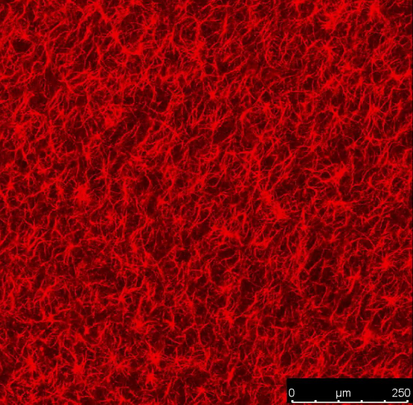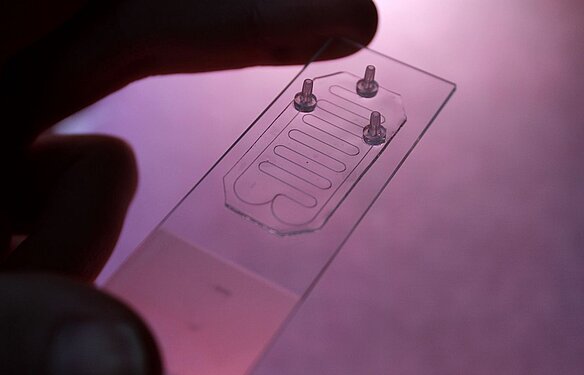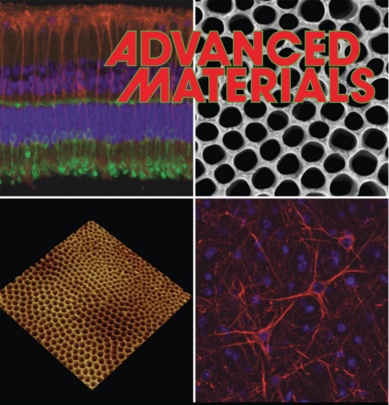We focus on the development of new smart biomaterials, interfaces, surfaces, and microdevices that yield external control-/switchability and perform a particular functionality preferentially for use in biomedical sensing, diagnostics and therapy. Following a "design by understanding" approach, conceptually the full range - from fundamental physics to applications - is covered, employing both experiments and computer modeling to establish a profound physical understanding. As this frequently desires novel approaches, the development of tailored methods and code development constitute an integral part of the group's research activities. Current research activities focus on: i) electron beam assisted synthesis of novel biomimetic and bioderived materials, ii) magnetically switchable biomaterials and composites, iii) biomimetic surfaces for organotypic tissue culture, iv) nanoporous materials, v) magnetic-core inert-shell nanoparticles, vi) nanoscale resolved mechanical properties, and vii) the (appropriate) fabrication and functionalization of microfluidic devices and components.
Contakt
Prof. Dr. Stefan G. Mayr
head
+49 (0)341 235-3368
stefan.mayr(at)iom-leipzig.de
Department of Surface Physics, University of Leipzig
https://research.uni-leipzig.de/ofp/
Highlights
Contact Guidance by Microstructured Gelatin Hydrogels for Prospective Tissue Engineering Applications
Contact Guidance by Microstructured Gelatin Hydrogels for Prospective Tissue Engineering Applications
M. Tadsen, R. P. Friedrich, S. Riedel, C. Alexiou, S.G. Mayr
Appl. Mat. & Interf. 11 (2019) 7450
https://doi.org/10.1021/acsami.8b21638A novel electron beam assisted imprint lithography is developed to pattern surfaces for tissue engineering applications. The pattern is demonstrated to induce contact guidance in endothelial cells.
Reagent-free programming of shape-memory behavior in gelatin by electron beams: Experiments and modeling
Reagent-free programming of shape-memory behavior in gelatin by electron beams: Experiments and modeling
S. Riedel, S. G. Mayr
Phys. Rev. Appl. 9 (2018) 024011
https://doi.org/10.1103/PhysRevApplied.9.024011An electron beam is employed to program a shape memory effect into gelatin. Employing large-scale computer simulation, the physical foundations of the observations are demonstrated.
Interaction of Ferromagnetic Shape Memory Alloys and RGD Peptides for Mechanical Coupling to Cells: from Ab Initio Calculations to Cell Studies
Interaction of Ferromagnetic Shape Memory Alloys and RGD Peptides for Mechanical Coupling to Cells: from Ab Initio Calculations to Cell Studies
M. Zink, F. Szillat, U. Allenstein, S. G. Mayr
Adv. Func. Mat. 23 (2013) 1383
https://doi.org/10.1002/adfm.201201789In this combined experimental – computational study, the physics of protein adhesion to iron based ferromagnetic shape memory alloys is explored for functionalization and mechanical coupling to cells.
Tailoring Substrates for Long-Term Organotypic Culture of Adult Neuronal Tissue
Tailoring Substrates for Long-Term Organotypic Culture of Adult Neuronal Tissue
V. Dallacasagrande, M. Zink, S. Huth, A. Jakob, M. Müller, A. Reichenbach, J. A. Käs, S. G. Mayr
Adv. Mat. 24 (2012) 2398
https://doi.org/10.1002/adma.201200816Nanotube array based scaffolds are developed and demonstrated to allow unprecedented cultivation times of adult tissue explants. This finding paves the way for novel ex-vivo biological studies, drug screening, and personalized medicine.
Ion-Irradiation-Assisted Phase Selection in Single Crystalline Fe7Pd3 Ferromagnetic Shape Memory Alloy Thin Films: From fcc to bcc along the Nishiyama-Wassermann Path
Ion-Irradiation-Assisted Phase Selection in Single Crystalline Fe7Pd3 Ferromagnetic Shape Memory Alloy Thin Films: From fcc to bcc along the Nishiyama-Wassermann Path
A. Arabi-Hashemi, S. G. Mayr
Phys. Rev. Lett. 109 (2012) 195704
10.1103/PhysRevLett.109.195704We demonstrate that ferromagnetic shape memory alloys deform along the Nishiyama-Wassermann path, when irradiated with energetic electrons.



